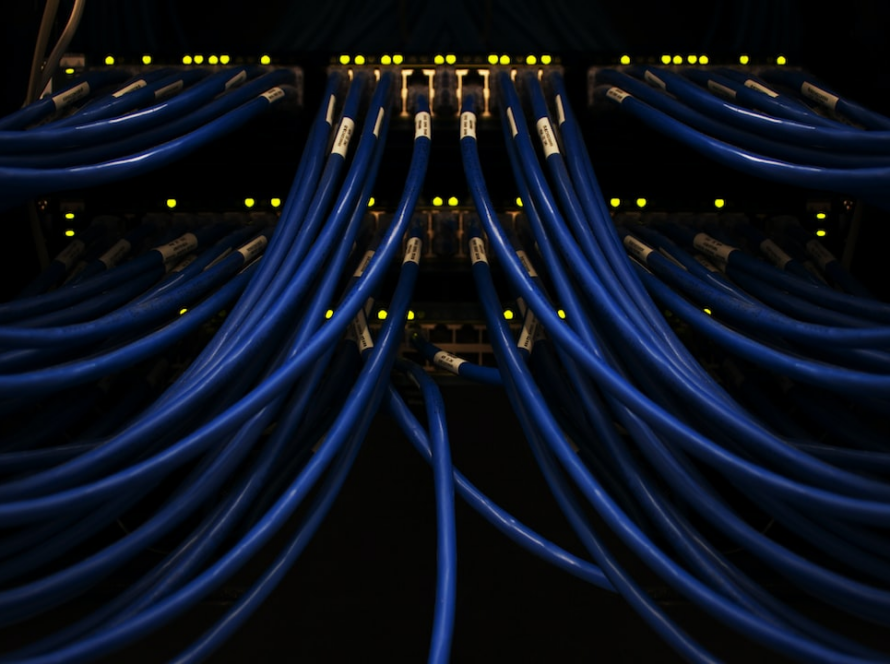When a user types a particular domain name into the browser’s address bar then your browser asks for a particular type of server where to find the site. These servers which are known as DNS servers are dedicated to answering any and all Domain Name System (DNS) queries.
DNS can be thought of as the address book of the World Wide Web which contains the IP address for every site on the internet. The browsers need that kind of information to understand the origin of the original website or cached version of that site.
In the following blog, we shall highlight and discuss the use of DNS servers, primary and secondary DNS servers, and the reason why DNS servers for not respond.
What is the Use of A DNS Server?
A DNS Server has the purpose of translating a domain name into an appropriate IP address. When a user types anything into a browser it is converted into a domain name that is easily understandable by the computer which allows locating a website. DNS servers do not need the human mind to memorize complex IP addresses like 71.233.102.120. Only the domain name www.example.com needs to be memorized which enables the user to search. Such a process of translation formally known as the DNS resolution requires multiple hardware components. It is known as the primary DNS server.
What is a Primary DNS Server?
A primary DNS server is considered to be the first touch point for any browser instructing where to find a site. The DNS server contains a controlling zone file that has DNS information that includes the IP address, contact information of the administrator, and time to live that depends upon the DNS type record that keeps a site valid in a local cache.
If the primary DNS server returns the IP address of the requested domain to the browser the query is finally resolved. If the DNS server is not available due to many reasons such as power shortage, hardware malfunction, cyberattack, or any other reason then the browser asks for a secondary DNS server. The DNS server shall contain a recent copy of the same DNS record. A secondary DNS server even though not mandatory for a DNS system to work is still highly recommended and required by some domain registrars.
The Domain Name Server (DNS) is the Achilles heel of the Web. The important thing is that it’s managed responsibly.
What is a Secondary DNS Server?
A Primary DNS server contains all types of relevant resource records and handles DNS queries for a domain. A secondary DNS server contains zone file copies that are read-only and can’t be modified. Instead of getting information from the local files, the information is communicated from a primary server known as zone transfer.
By adding the secondary DNS provider, you shall have two separate or distinctive DNS networks running simultaneously. Both these networks provide backup for each other and for your users in the event one network is offline or degraded performance.
Why DNS Server Is Not Responding?
It happens sometimes that when the user types in a domain name into the browser’s address bar it may show an error message such as “DNS server is not responding.” When such a message flashes on the screen it means that the DNS server has failed to respond.
There can be a variety of reasons why a DNS server may not be getting connected which can be due to an internet connection or your DNS settings. A DNS setting may not work if a browser is outdated and it can be a problem from the side of the server. There are many ways to resolve the errors or issues and some of them are mentioned below:-
1. Try another web browser
If your browser is not working properly and remains inoperative due to any reason then it may cause the error. You can visit the site of Google Chrome, Mozilla Firefox, or even try Safari. You can switch from one browser to another browser and then check and resolve the error and check that you are using the latest version of your preferred application.
2. Deactivate your firewall
The first step is resolving the DNS server error message by updating the browser and if the error is not resolved then the next step is to rule out your firewall as the cause. A firewall provides a layer of security that helps in preventing unauthorized access into or out of the computer network. It keeps the computer devices safe and secured which can easily interfere with the network connection and causes issues that may include the error “DNS server is not responding” error. You can temporarily deactivate your firewall by trying to visit the same website from your browser. If you have already deactivated your firewall you can try to visit the same website from your browser. If the web page loads successfully then you have identified the firewall as the problem. In such a situation you can reconfigure the settings of your existing program or move on to a new program. A firewall is positioned in such a way that it can control the network traffic that is coming or going out of the network or computer.
3. Restarting the router
If you can not resolve the issues of the DNS server by turning off the firewall then you may move to the next step of ruling out your browser.
Click on the power button twice by simply restarting your router which shall flush your router’s cache. This shall resolve the “DNS server isn’t responding” error. Once you have turned the router back on and got a secured internet connection then try visiting the same website from your browser. Wait until your device has established an internet connection and try to visit the site again.
4. Flush your DNS cache and Reset Your IP
If your browser, firewall, and router are not working then it must be definitely your DNS settings where the DNS cache stores the IP addresses and other DNS records that can be frequently visited domains. Flushing your DNS cache can help resolve the DNS error message. Once you enter your password, you should see a message confirming that the DNS cache has been reset. You can then try to visit the website again in your browser.
What is DNS Server
A DNS server is a server that translates human-readable domain names like “example.com” to an IP address. When you type in a domain name into your browser, the DNS server looks up the corresponding IP address for that domain name and sends it back to your computer.
What Does DNS Server Do?
DNS servers allow us to identify the correct website when we type in a URL (Uniform Resource Locator). DNS also allows us to connect to the Internet using our computer’s IP address. DNS servers act as the phone book for the Internet, allowing users to access websites and other online services without having to remember the numerical IP address for every website or service.
What Happens If I Cannot Connect To The Internet?
If you cannot connect to the internet, then your DNS server may not be working properly. You may be able to fix this by following these steps:
🚩Check to see if your DNS server is up and running.
🚩Clear your DNS cache.
🚩Check for any blocked DNS servers.
What Should I Do If My DNS Server Isn’t Responding?
In some cases, DNS servers may not be responding. In this event, you will need to check these issues
🚩Try another Web browser
🚩Deactivate your Firewall
🚩Try Restarting the Router
🚩Flush your DNS cache and Reset Your IP



